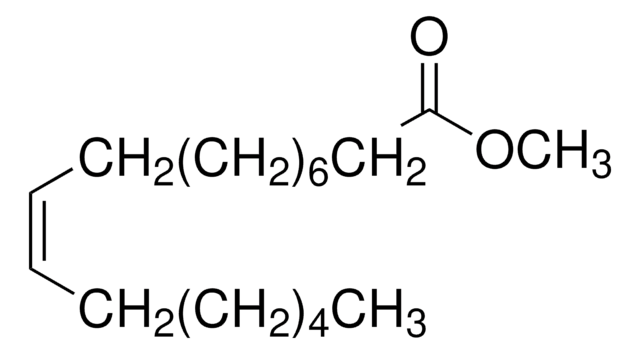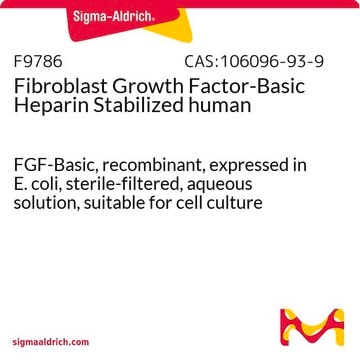F6926
Fibroblast Growth Factor-8b from mouse
>97% (SDS-PAGE), recombinant, expressed in E. coli, lyophilized powder
Synonym(s):
FGF-8b
About This Item
Recommended Products
biological source
mouse
Quality Level
recombinant
expressed in E. coli
Assay
>97% (SDS-PAGE)
form
lyophilized powder
potency
15-60 ng/mL
mol wt
calculated mol wt 23.6 kDa
predicted mol wt 22 kDa
packaging
pkg of 25 μg
storage condition
avoid repeated freeze/thaw cycles
impurities
endotoxin, tested
UniProt accession no.
storage temp.
−20°C
Gene Information
mouse ... Fgf8(14179)
Related Categories
General description
Application
- for subgerminal cavity injection in fertilized quail, chicken, turtle and emu eggs
- in the induction of neural differentiation in stem cells from Human Exfoliated Deciduous teeth (SHED) and
- in experiments conducted on fertilized hens′ eggs, where FGF8 induced SOX3 gene.
Biochem/physiol Actions
Physical form
Analysis Note
Signal Word
Warning
Hazard Statements
Precautionary Statements
Hazard Classifications
Eye Irrit. 2 - Skin Irrit. 2
Storage Class Code
11 - Combustible Solids
WGK
WGK 3
Flash Point(F)
Not applicable
Flash Point(C)
Not applicable
Personal Protective Equipment
Certificates of Analysis (COA)
Search for Certificates of Analysis (COA) by entering the products Lot/Batch Number. Lot and Batch Numbers can be found on a product’s label following the words ‘Lot’ or ‘Batch’.
Already Own This Product?
Find documentation for the products that you have recently purchased in the Document Library.
Articles
Fibroblast growth factors in cell culture and various growth factors for your research
Our team of scientists has experience in all areas of research including Life Science, Material Science, Chemical Synthesis, Chromatography, Analytical and many others.
Contact Technical Service








